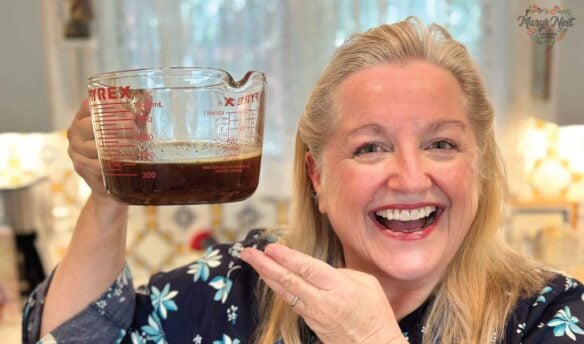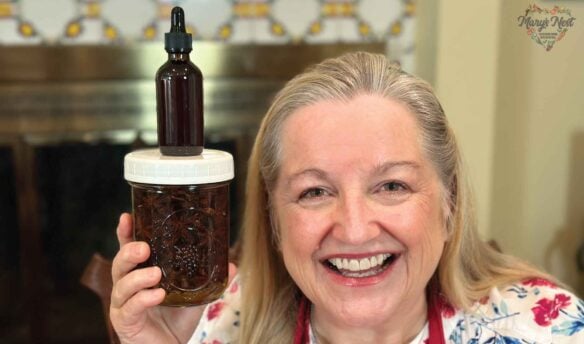Here is a master recipe for how to make a medicinal herbal poultice to treat minor abrasions, cuts, bug bites, and more. You’ll be glad at how easy it is to make this natural remedy with fresh or dried herbs.
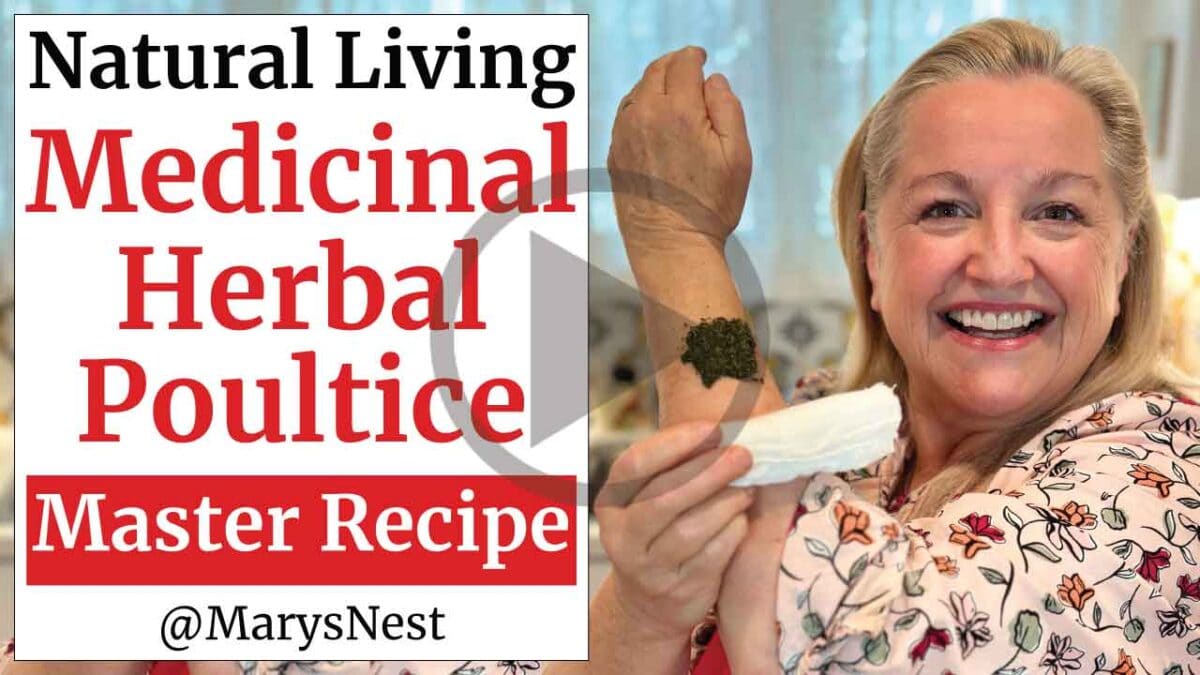
Affiliates note: As an Amazon Associate I earn from qualifying purchases. My content may contain affiliate links to products and services. If you click through and make a purchase, I’ll receive a small commission. It does not affect the price you pay.
Table of Contents
- What is a Master Recipe?
- Learning About Medicinal Herbs
- What is a Poultice?
- What is a Medicinal Herbal Poultice?
- Disclaimer
- Medicinal Herbal Poultice Ingredients
- Why Does Thyme Make a Good Medicinal Poultice?
- How to Make a Medicinal Herbal Poultice
- The Importance of a Patch Test
- How to Apply a Medicinal Herbal Poultice
- Storing and Reusing
- More Natural Remedies
- Farmhouse Teas (and Herbs!)
- Download Your Free 36-Page Pantry List
- The Modern Pioneer Cookbook
- Join the Traditional Foods Kitchen Academy
- Kitchen Academy Videos
- Medicinal Herbal Poultice Master Recipe Recipe
- Shop for items used in this blog post or video
What is a Master Recipe?
A master recipe is a template that outlines a certain order of steps to create a finished product. In this case, I am providing you with a master recipe for making a medicinal herbal remedy, specifically an herbal poultice.
Today’s recipe will walk you through how to prepare an herbal poultice using fresh and dried thyme. However, since it’s a master recipe, remember you can choose which herbs you want to use to make your poultice, depending on which type of skin irritation you are treating.
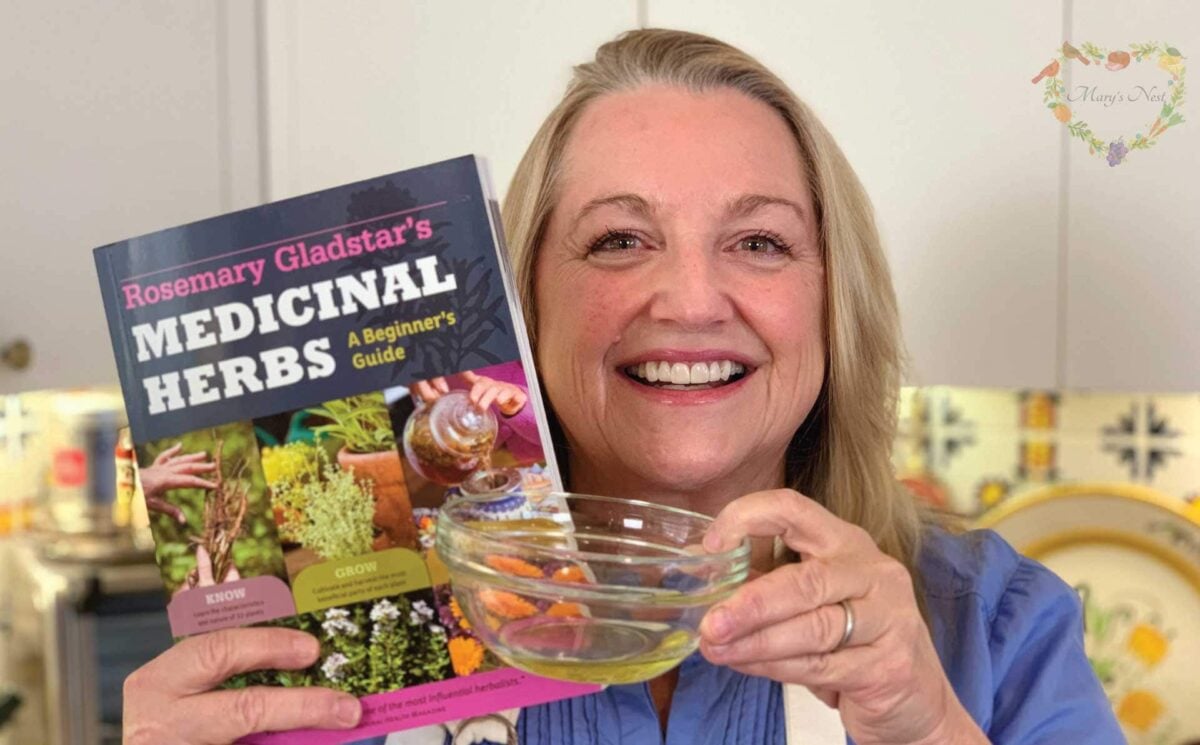
Learning About Medicinal Herbs
If you are new to working with herbs to make natural remedies, I highly recommend you turn to an authoritative source to educate yourself about the different herbs and their medicinal properties. Yes, herbs have culinary uses, but they can also be a form of natural medicine, so you want to be well-informed before you begin to use them for their medicinal properties.
There are various resources available to you to educate yourself about herbs, but I highly recommend any books written by Rosemary Gladstar, including my favorite Medicinal Herbs – A Beginner’s Guide.
Other books by Rosemary include:
- Herbal Recipes for Vibrant Health: 175 Teas, Tonics, Oils, Salves, Tinctures, and Other Natural Remedies for the Entire Family
- Family Herbal: A Guide to Living Life with Energy, Health, and Vitality
- Herbal Healing for Women
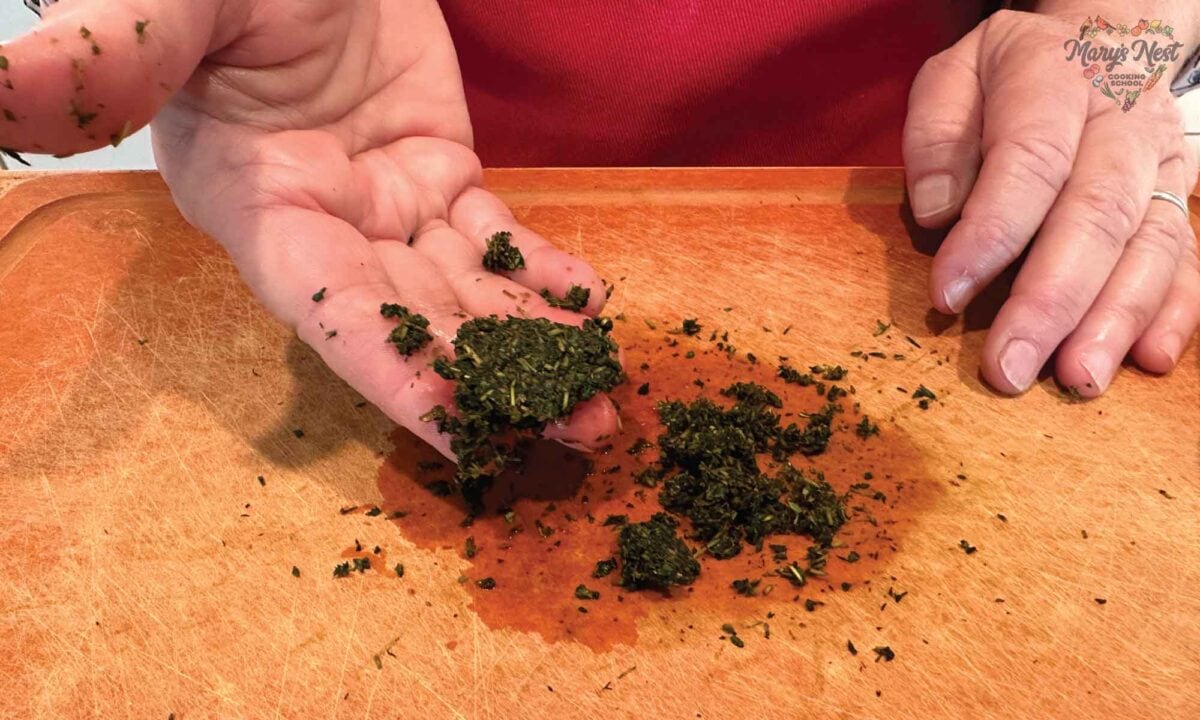
What is a Poultice?
A poultice is a soft, damp clump of material, typically made from some type of plant material, which may include vegetables and herbs, that’s sometimes mixed with flour or ground old-fashioned rolled oats.
You’ll apply the poultice to the skin to relieve some type of inflammation. To keep the clump of material in place, you’ll use a cloth that you can optionally cover with a plastic wrap.
What is a Medicinal Herbal Poultice?
A medicinal herbal poultice is made with herbs to make use of the medicinal properties that the selected herbs contain. Generally, you will use an herbal poultice to accelerate the healing of a minor abrasion, cut, or bug bite. You can also apply an herbal poultice to the skin to tamp down aches and pains or other forms of inflammation.
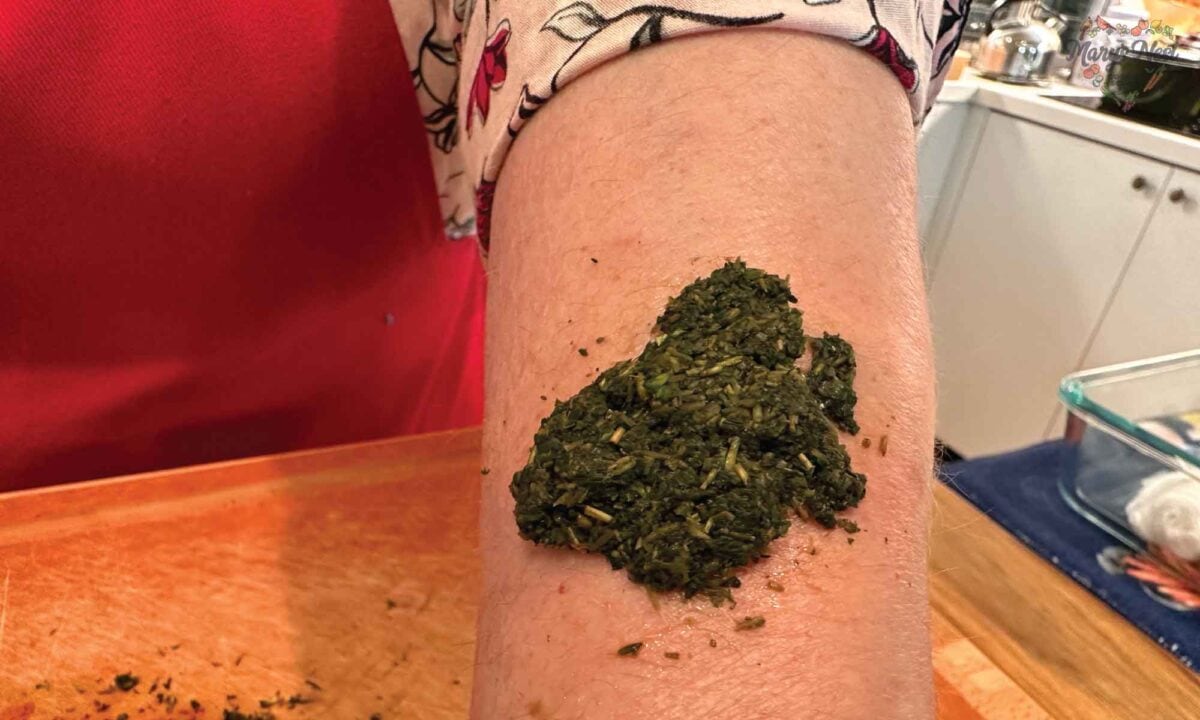
Disclaimer
I am not a doctor or medical professional. If you are not feeling well, please seek professional medical attention and medicine. And if you are thinking of supplementing your treatment with home remedies, be sure to talk to your medical professional about them. It’s important that you get the medicine and treatments you need to get back to good health.
Medicinal Herbal Poultice Ingredients
Find the full printable recipe with ingredients below.
You can make a medicinal herbal poultice with a specific herb or a mixture of herbs. In my master recipe, I use fresh and dry thyme for my demonstration because it is an excellent disinfectant. Thyme also helps to increase circulation, which speeds up the healing process.
- Fresh Herbs – Generally, when using fresh herbs, all you need is the herb to make a poultice. If the herb is exceptionally dry, you can mix it with a small amount of paste made from a mixture of water and ground old-fashioned rolled oats.
- Dry Herbs – When using dry herbs, you want to mix together equal parts of dry herbs and warm water. Using a mortar and pestle, pound the dry herb with the water to make a paste. As with the fresh herbs, if the paste does not hold together, you mix in ground old-fashioned rolled oats. Just make sure you add equal amounts of ground oats and water to the mortar and pestle.
To learn how to store herbs, be sure to watch my How to Stock Your Healing Pantry and Create an Herbal Medicine Cabinet video and download my free accompanying inventory list.

Choose from a Variety of Herbs
You are not limited to my example with thyme when making a poultice. Excellent herbs to use individually or in combination to create a medicinal herbal poultice include:
- Basil – leaves
- Burdock – root
- Calendula – flower petals
- Chickweed – top leaves
- Plantain (the herb, not the fruit) – leaves
- Slippery Elm – inner bark
This list is just a sampling. Be sure to read one of Rosemary Gladstar’s books to learn about a whole host of herbs that are perfect for making a poultice.
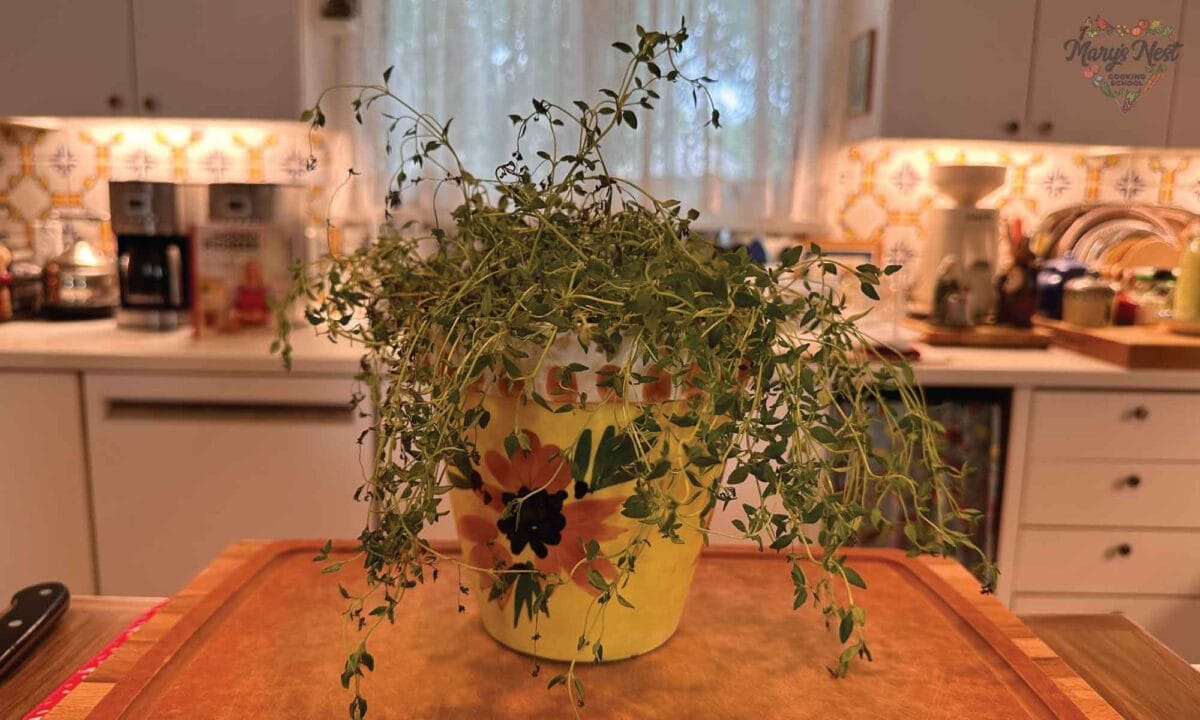
Why Does Thyme Make a Good Medicinal Poultice?
Either fresh or dry thyme makes an excellent choice when making a medicinal herbal poultice because:
- The fresh version is easy to grow indoors or out.
- The dry version is easy to find at any local grocery store.
- It’s a natural disinfectant.
- It helps to increase circulation, which contributes to healing.
You can leave a thyme medicinal herbal poultice on the skin to disinfect a minor abrasion, cut, or bug bite for 30 minutes. Once you remove the poultice, allow the skin to breathe for 1 to 2 hours before repeating the thyme poultice treatment for 1 or 2 additional applications.
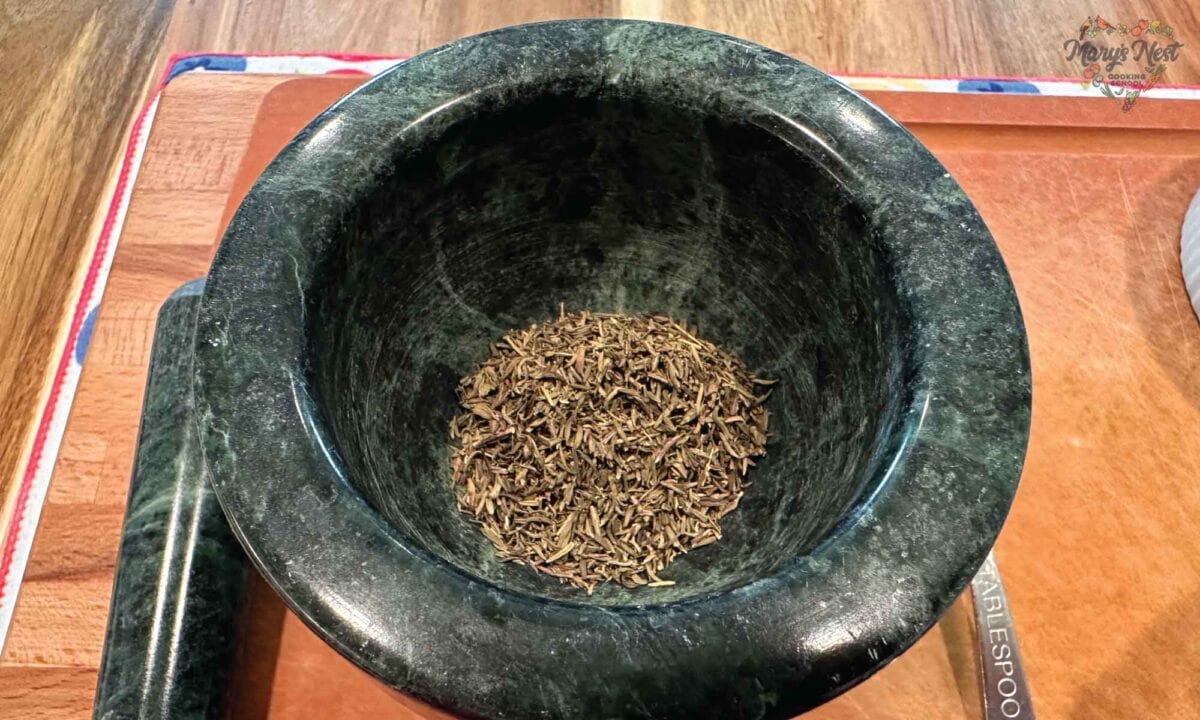
How to Make a Medicinal Herbal Poultice
Find the full printable recipe with instructions below.
The type of herb(s) you are using to make the poultice will determine which parts of the herb you use to make the poultice. This may include the leaves, flowers, fruits, roots, or bark.
Once you choose the correct parts of the herb plant, you will mash them until you create a fine paste. You can do this by:
- Chopping them with a sharp knife,
- Whirling the herbs in a mini-chop or a spice grinder, or
- Pounding them in a mortar and pestle
If you use fresh herbs to make the poultice, they should release enough liquid to make a paste.
If you use dried herbs, you will want to use equal parts dry herbs and warm water to make the poultice.
If either herb, fresh or dry, does not make a paste sufficient to adhere to the skin, you can also mix the herbs with a bit of fine ground old-fashioned rolled oats.
The Importance of a Patch Test
Before applying a medicinal herbal poultice to an area of the skin, be sure to test a very small amount of the poultice on a patch of skin. This is usually done on the inner arm near the wrist. If after a few minutes, the herb poultice does not appear to be causing any inflammation on the skin, it should be fine to use as a poultice.
But there is always a chance that the poultice may cause a delayed allergic reaction. If the skin to which you are applying the poultice tends to be allergy-prone, it is best to wait 1 to 3 days to see if an inflammatory response develops from the herb being tested for a few minutes on the inner arm.
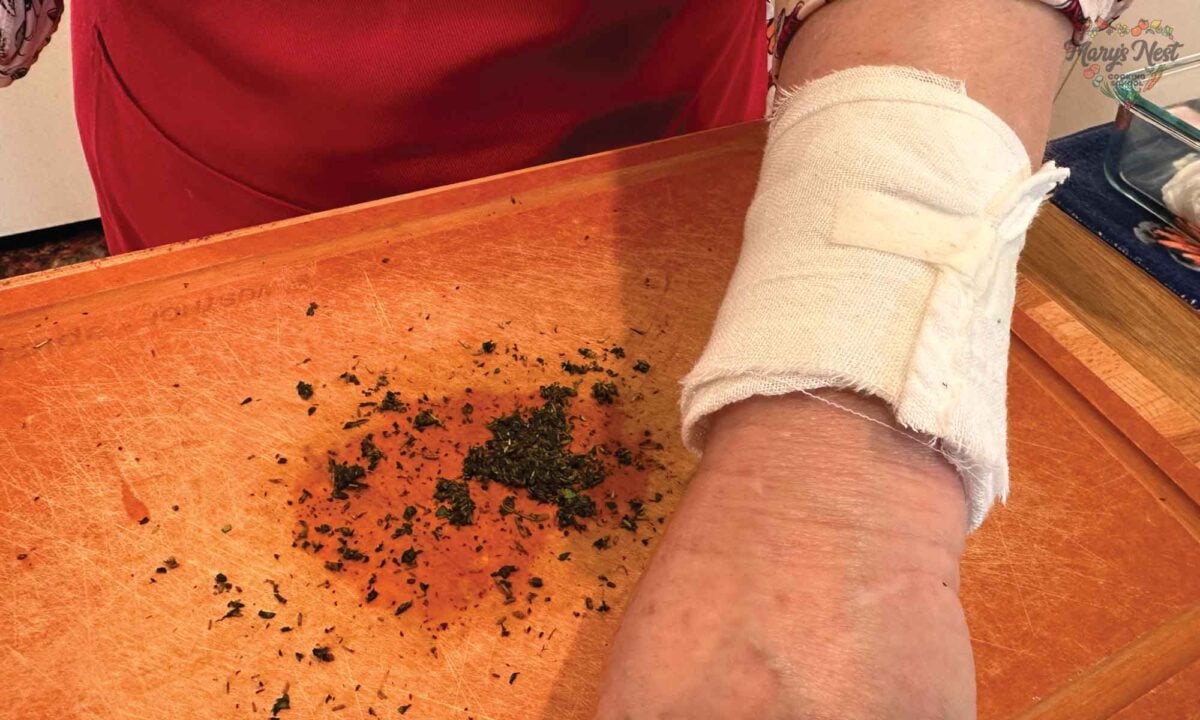
How to Apply a Medicinal Herbal Poultice
To apply an herbal poultice, press the mashed herbs on the area of the skin to be treated and then wrap the area with a clean bandage. If the herb releases a considerable amount of liquid, you can also wrap the bandage with some plastic wrap.
You can leave a medicinal herbal poultice on the skin for as little as 20 minutes or up to 3 hours. Much will depend on which herb you are using. After the allotted time, you can remove the herbal poultice and allow the skin to breathe.
You can repeat the poultice treatment for two additional treatments for a total of three treatments. Simply allow an hour or two to pass between each treatment to allow the skin to breath.
Storing and Reusing
A medicinal herbal poultice is best used when it is freshly made. However, you can refrigerate it while it’s being used intermittently for a second or third application when used within a 24-hour period.
More Natural Remedies
How to Make the Most Flavorful Strawberry Digestive Bitters
Try these flavorful strawberry bitters for great taste and digestive support.
5 Most Surprising Anti-Inflammatory Drinks
You can find these surprising and flavorful anti-inflammatory drinks at your local grocery store or make them homemade.
5 Most Surprising Anti-Inflammatory Foods
Find these beneficial foods at your local grocery store or learn how to make many of them at home.
Farmhouse Teas (and Herbs!)
If you are looking for an excellent source for dry herbs, look no further than Farmhouse Teas. And even better, they are offering my sweet friends a 10% discount off their wide selection of herbal tea blends and individual dry herbs.
Download Your Free 36-Page Pantry List
For an extensive list of the traditional foods you can make and purchase to stock your pantry, be sure to download my free 36-page Traditional Foods Pantry List. This comprehensive eBook is full of links to recipe videos, helpful articles, and more!
And if you’re looking for a printed book full of my traditional foods recipes that shows you how to create a traditional foods kitchen, be sure to preorder your copy of my new book, The Modern Pioneer Cookbook.
Join the Traditional Foods Kitchen Academy
Are you looking for more traditional foods videos? If so, I invite you to join the Traditional Foods Kitchen Academy. Members of this optional paid YouTube community get access to exclusive videos, live streams, and other members-only perks. Plus, your YouTube comments include a special members-only badge.
Kitchen Academy Videos
How to Make Oatmeal Higher in Protein (The Old-Fashioned Way)
Turn simple oats into a hearty, protein-rich porridge.
The Only Traditional Recipes You’ll Ever Need!
Focus on traditional recipes with real food. Don’t chase trends.
Let’s Talk Akkermansia: A Tiny Helper for Big Gut Health
Discover how Akkermansia muciniphila supports gut and immune health—and how traditional foods help this mighty microbe thrive.
Stay in Touch with Mary’s Nest
- Subscribe to My YouTube Channel for Traditional Foods Videos (Free) - When you subscribe, be sure to click on the notification bell that will let you know each time I upload a new video.
- Subscribe to Mary’s Traditional Foods Newsletter (Free) - Get a free 36-page eBook for signing up: How to Stock Your Essential Traditional Foods Four-Corners Pantry.
- Join the Traditional Foods Kitchen Academy - For more detailed videos and exclusive members-only perks, join my YouTube membership community.
- Order The Modern Pioneer Cookbook - Get a hardcover book of Mary's nourishing recipes from a Traditional Foods Kitchen. This bestselling cookbook is published by Penguin Random House with their DK imprint.
- Order The Modern Pioneer Pantry - Get Mary's latest hardcover cookbook about preserving food and making delicious meals from your Four Corners Pantry. Mary's second cookbook is also published by Penguin Random House.
I look forward to having you join me in my Texas Hill Country Kitchen!
I’d like to receive more tips and recipes from Mary’s Nest.
Medicinal Herbal Poultice Master Recipe

Equipment
- 1 Sharp knife mini-chop, spice grinder, or mortar and pestle
- 1 Cutting board
- 1 clean bandage
- 1 cloth medical tape
- 1 clean plastic wrap, optional
Ingredients
For a Medicinal Herbal Poultice Using Fresh Herbs
- 1 handful fresh herbs Variety of herb(s) used will depend on the condition being treated.
- 1 handful ground old-fashioned rolled oats, optional To create a paste, if necessary
- 1 tbsp warm water, optional To assist in creating a paste, if necessary
For a Medicinal Herbal Poultice Using Dry Herbs
- 1 tbsp dry herbs Variety of herb(s) used will depend on condition being treated.
- 1 tbsp warm water Water temperature should be between 110°F to 130°F (43°C to 54°C).
- 1 tbsp ground old-fashioned rolled oats, optional To create a paste, if necessary.
- 1 tbsp warm water, optional To assist in creating a paste, if necessary.
Instructions
For Making a Medicinal Herbal Poultice Using Fresh Herbs
- Take a handful of fresh herbs and finely chop them until they release their moisture and turn into a paste.
- If they do not form a paste, you can make a separate paste with the ground old-fashioned rolled oats. Once this is formed into a paste, mix in the herbs and then apply the poultice to the skin and wrap with a clean bandage. You can optionally wrap the bandage with some plastic wrap.
- Depending on which herb you are using, the poultice can stay in place for 20 minutes to 3 hours. Remove and allow the skin to breathe. (See the Recipe Notes for a recommended thyme poultice duration.)
- You can repeat the poultice application for two more intervals, allowing the skin to breathe for 1 to 2 hours between each application.
For Making a Medicinal Herbal Poultice Using Dry Herbs
- Place the dry herbs and the warm water into a mortar and pestle and pound the mixture into a paste.
- If the dry herbs do not form into a sufficient paste, add the ground old-fashioned rolled oats and the additional warm water. Continue to pound until a paste forms.
- Depending on which herb you are using, the poultice can stay in place for 20 minutes to 3 hours. Remove and allow the skin to breathe. (See the Recipe Notes for a recommended thyme poultice duration.)
- You can repeat the poultice application for two more intervals, allowing the skin to breathe for 1 to 2 hours between each application.
Storing and Reusing a Medicinal Herbal Poultice
- A medicinal herbal poultice is best used when it is freshly made.
- A medicinal herbal poultice can be refrigerated while being used intermittently for a second or third application when used within a 24-hour period.
Video
Notes
Shop for items used in this blog post or video
Supplies for Making and Using an Herbal Poultice
Amazon Shop and Shopping Guide
- Visit Mary’s Nest Amazon Shop
- Visit my Shopping Guide page
Get up to 15% off for stocking your Traditional Foods Pantry and equipping your Modern Pioneer Kitchen, including discounts from US Wellness Meats, Farmhouse Teas, Backwoods Home, Masontops, Cultures for Health, Survival Garden Seeds, Redmond Real Salt, Mother Earth News, and More!
Recommended Reading
- The Modern Pioneer Cookbook
- Nourishing Traditions
- Spontaneous Healing
- Books by Rosemary Gladstar:
Disclaimer:I am not a medical doctor, a medical professional, a dietician, or a nutritionist. All content found on the MarysNest.com website, including text, images, videos, eBooks or eGuides, social media, or other formats, were created solely for informational purposes only. The content is not intended to be a substitute for professional medical advice, diagnosis, or treatment. Always seek the advice of your physician or other qualified healthcare provider with any questions you may have regarding a medical condition or proper nutritional advice. Never disregard professional medical advice or delay in seeking it because of something you have watched in a video or read on this website. Use caution when following the recipe in this video. The creator and publisher of this video and website will not be held responsible for any adverse effects that may arise from the use of this recipe and method or any other recipe and method on this website or corresponding video channel.










